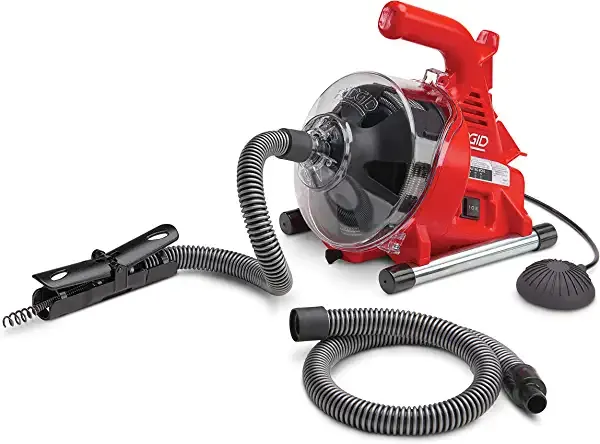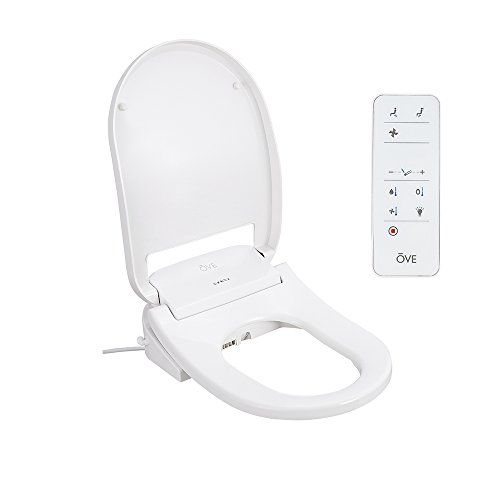Why Is There A Mushroom Growing In My Bathroom
Have you ever walked into your bathroom and been surprised to find a mushroom growing? It may seem strange, but there are actually certain conditions that can lead to mushroom growth in bathrooms. In this article, we will explore why mushrooms can thrive in this environment and what you can do to prevent them from appearing in the future.
One of the main factors that contribute to mushroom growth in bathrooms is excess moisture. Bathrooms are naturally humid spaces, especially after hot showers or baths. When this moisture lingers and is not properly ventilated, it creates the perfect environment for mushrooms to grow.
Additionally, leaks and water damage can also provide the necessary moisture for mushrooms to thrive.
Understanding the reasons behind mushroom growth in your bathroom is the first step in preventing it. By taking proper cleaning and maintenance measures, as well as addressing any ventilation or water issues, you can keep your bathroom fungus-free.
So let’s dive in and discover how to tackle this unexpected bathroom guest.
Key Takeaways
- Prevention methods such as using vinegar and water mixture or tea tree oil solution can help avoid mushroom growth in the bathroom.
- Improving bathroom ventilation with exhaust fans or open windows can also help prevent the growth of mushrooms.
- If there are persistent cleanliness issues or serious mushroom problems in the bathroom, it is advisable to seek professional help.
- Professional remediation services ensure safe removal of mushrooms, address the underlying cause of the problem, and create a healthier and cleaner bathroom environment.
Understanding the Conditions Needed for Mushroom Growth
Do you ever wonder why there’s a mysterious mushroom sprouting in your bathroom? Understanding mycology basics can help shed light on this phenomenon.
Mushrooms, or fungi, require specific conditions to grow, and your bathroom might be providing them. Fungi thrive in damp and dark environments, making bathrooms an ideal breeding ground. Excessive moisture from showers or leaks can create a humid environment, promoting fungal growth. Additionally, poor ventilation prevents proper air circulation, further contributing to the problem.
To prevent fungal infestations, ensure your bathroom is well-ventilated by using exhaust fans or opening windows. Fix any leaks promptly, as the dampness can encourage mushroom growth. Regularly clean and disinfect your bathroom to remove any spores that may be present.
By understanding the conditions needed for mushroom growth and taking preventive measures, you can keep your bathroom fungi-free.
Identifying Common Types of Bathroom Mushrooms
Identifying common types of fungi can help solve the mystery in your bathroom. When it comes to common bathroom fungi, there are a few types that are frequently found in damp and humid environments.
One common type is the black mold, also known as Stachybotrys chartarum. This fungus appears as black patches and can cause respiratory issues and allergic reactions.
Another common bathroom mushroom is the pink mold, scientifically known as Aureobasidium. It often appears as pink or orange slimy patches on bathroom surfaces and can cause skin and eye irritation.
Finally, we have the green mold, or Aspergillus, which appears as greenish patches and can cause respiratory problems in individuals with weakened immune systems.
It’s important to address these bathroom fungi promptly to prevent any potential health risks.
Excess Moisture as a Culprit for Mushroom Growth
Excess moisture in your bathroom can be a major culprit for the growth of unwanted fungi. When there’s excessive moisture, it creates a perfect breeding ground for mushrooms and other types of fungi. Here are some key points to consider regarding excess moisture as a culprit for mushroom growth:
-
Inadequate ventilation: Poor ventilation in bathrooms can trap moisture, promoting fungal growth.
-
Leaks and water damage: Leaking pipes or water damage from showers and sinks can create a moist environment that mushrooms thrive in.
-
High humidity: Humid conditions in bathrooms can lead to condensation on surfaces, providing the necessary moisture for mushroom growth.
-
Lack of sunlight: Bathrooms without windows or proper lighting can prevent sunlight from drying out excess moisture, facilitating mushroom growth.
-
Health risks: The presence of mushrooms in your bathroom can pose health risks, as they can release spores that may cause respiratory problems or allergic reactions.
To prevent mushroom growth, it’s crucial to address and eliminate excess moisture in your bathroom. Proper ventilation, regular maintenance to fix leaks, controlling humidity levels, and ensuring adequate lighting can help prevent mold and the associated health risks.
Poor Ventilation and High Humidity
Lack of proper ventilation and high humidity in your bathroom can create a breeding ground for unwanted fungi, leading to potential health risks. When moisture in the air cannot escape, it condenses on surfaces, providing an ideal environment for mold growth. The combination of poor ventilation and high humidity creates a cycle where moisture accumulates, promoting the growth of mushrooms and other fungi.
To better understand the impact of poor ventilation and high humidity, consider the following table:
| Environmental Factors | Health Risks |
|---|---|
| Stagnant air | Respiratory problems |
| Excess moisture | Allergic reactions |
| Lack of airflow | Skin irritation |
Proper ventilation helps to prevent mold growth by improving air circulation and reducing moisture levels. This can be achieved through the use of exhaust fans, opening windows, or installing a dehumidifier. Ensuring good airflow and maintaining low humidity levels in your bathroom is essential for mold prevention and safeguarding your health.
Leaks and Water Damage
If you notice any leaks or water damage in your bathroom, it’s important to address them promptly to prevent further issues.
Leaks can occur due to a variety of reasons, including faulty plumbing fixtures, corroded pipes, or improper installation. These causes of bathroom leaks can lead to the accumulation of excess moisture, creating the perfect environment for mold growth, including the appearance of a mushroom.
Water damage can have serious consequences, such as weakening the structural integrity of your bathroom, promoting the growth of harmful bacteria, and causing health issues like respiratory problems and allergies. Additionally, water damage can lead to costly repairs and renovations.
To prevent leaks and water damage, it is crucial to regularly inspect your bathroom for any signs of leakage, such as dripping faucets or wet spots, and promptly address any issues by contacting a professional plumber.
Lack of Proper Cleaning and Maintenance
Now that you understand the potential cause of leaks and water damage in your bathroom, it’s important to address another possible reason for the mushroom growth: lack of proper cleaning and maintenance. Fungi, including mushrooms, thrive in damp and dirty environments, making your bathroom an ideal breeding ground. Failure to regularly clean and maintain your bathroom can create the perfect conditions for fungal growth.
To effectively combat this issue, consider using natural remedies and implementing proper cleaning techniques. Natural remedies such as vinegar or tea tree oil have antifungal properties that can help eliminate mushrooms and prevent their regrowth. Additionally, adopting regular cleaning habits, such as wiping down surfaces, eliminating excess moisture, and using appropriate cleaning agents, will reduce the likelihood of fungal growth.
By employing these techniques, you can ensure a clean and fungus-free bathroom environment.
How to Remove and Prevent Mushroom Growth
To maintain a clean and healthy bathroom environment, it’s essential to know effective techniques for removing and preventing the growth of mushrooms. Here are some key steps you can take to tackle this issue:
-
Remove the existing mushrooms by wearing gloves and using a damp cloth or paper towel to gently wipe them away. Avoid using harsh chemicals as they may release harmful spores into the air.
-
Identify and fix any moisture problems in your bathroom, such as leaks or inadequate ventilation. Excess moisture is a primary factor in mushroom growth, so addressing these issues is crucial.
-
Fix any leaks promptly and ensure proper drainage.
-
Increase ventilation by using exhaust fans or opening windows during and after showers.
-
Keep your bathroom clean and dry. Regularly clean surfaces with a mild detergent and disinfectant to prevent mold growth, which often accompanies mushrooms.
-
Monitor your bathroom for any signs of recurring mushrooms and promptly address them to prevent health risks associated with mold exposure.
By following these steps, you can effectively remove and prevent the growth of mushrooms in your bathroom, promoting a clean and healthy environment.
Natural Remedies for Mushroom Prevention
Improve your bathroom’s health and cleanliness with natural remedies that prevent the growth of unwanted fungi. When it comes to DIY solutions for mushroom prevention, there are several environmentally friendly options to consider.
One effective method is using vinegar, which has antifungal properties. Mix equal parts of vinegar and water in a spray bottle and apply it to any areas prone to mushroom growth, such as damp corners or grout lines.
Another natural remedy is tea tree oil. Dilute a few drops of tea tree oil in water and spray it onto affected areas. Tea tree oil not only helps prevent mushroom growth but also inhibits the spread of bacteria and viruses.
Additionally, improving ventilation in your bathroom by using exhaust fans or opening windows can help reduce moisture levels and discourage fungal growth.
By incorporating these natural remedies, you can maintain a healthy and fungus-free bathroom environment.
When to Seek Professional Help
If you’re facing persistent issues with your bathroom’s cleanliness and health, it may be time to consider seeking professional help. While natural remedies can be effective in preventing mushroom growth, there are times when the problem becomes too serious to handle on your own.
Knowing when to DIY and when to call a professional is crucial in dealing with a mushroom problem. If you notice a large number of mushrooms appearing in your bathroom, especially if they’re growing rapidly or spreading to other areas, it’s a clear sign of a serious issue.
Additionally, if the mushrooms have a strong, unpleasant odor or are accompanied by mold growth, it’s important to seek professional help immediately. Professional remediation services have the expertise and equipment to safely remove mushrooms and address the underlying cause of the problem, ensuring a healthier and cleaner bathroom environment.
Frequently Asked Questions
Can mushrooms in the bathroom be harmful to my health?
Long term exposure to bathroom mushrooms can have negative health effects. They can release spores that can cause respiratory issues and allergic reactions. To remove them properly, wear gloves, use a damp cloth, and dispose of them in a sealed bag.
How long does it typically take for mushrooms to grow in a bathroom?
Factors affecting the growth of mushrooms in bathrooms include high humidity, poor ventilation, and organic matter. Common mistakes that can lead to mushroom growth are leaving wet towels, not fixing leaks, and not cleaning regularly.
Are there any specific types of mushrooms that are more common in bathrooms?
Common causes of bathroom mushroom growth include high humidity and poor ventilation. To prevent this, ensure your bathroom is well-ventilated, fix any leaks, and use a dehumidifier. Regularly clean and dry surfaces to discourage fungal growth.
Can mushrooms in the bathroom indicate a larger mold problem?
Mushrooms in the bathroom can indicate a larger mold problem. Mold growth is often accompanied by the presence of mushrooms. To address it, identify and remove the source of moisture, improve ventilation, and consider professional help if necessary.
Are there any home remedies that can effectively prevent mushroom growth in the bathroom?
To prevent mushroom growth in your bathroom, there are several effective home remedies you can try. These include improving ventilation, reducing humidity levels, fixing any water leaks, using antifungal sprays or solutions, and keeping the bathroom clean and dry.
Conclusion
In conclusion, if you find a mushroom growing in your bathroom, it’s likely due to the presence of excess moisture, poor ventilation, or water damage.
To remove and prevent mushroom growth, it’s important to address these underlying issues. Regular cleaning and maintenance, along with the use of natural remedies such as vinegar or hydrogen peroxide, can help prevent future mushroom growth.
However, if the problem persists or becomes severe, it’s recommended to seek professional help to ensure proper remediation.










.jpg)








